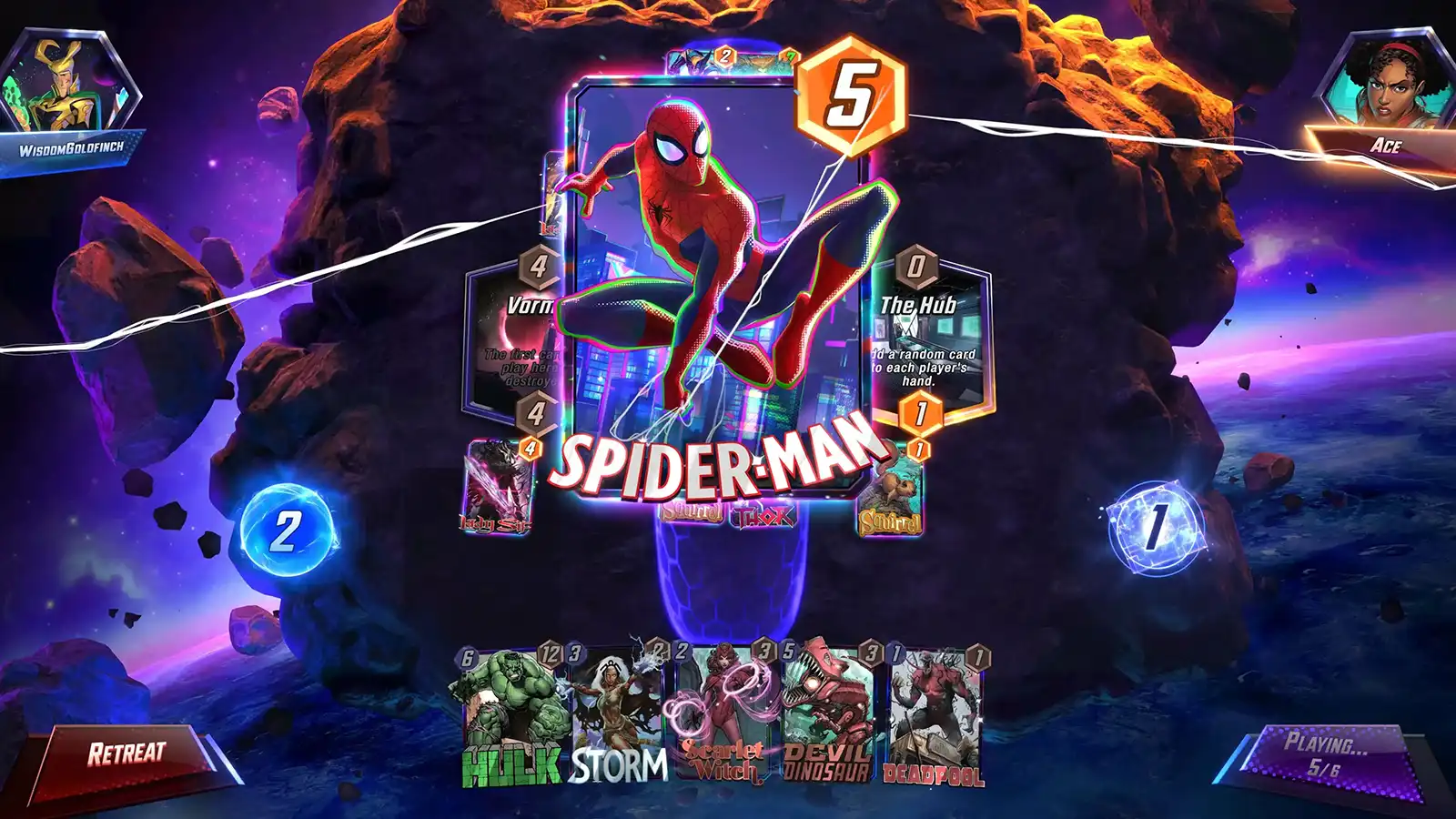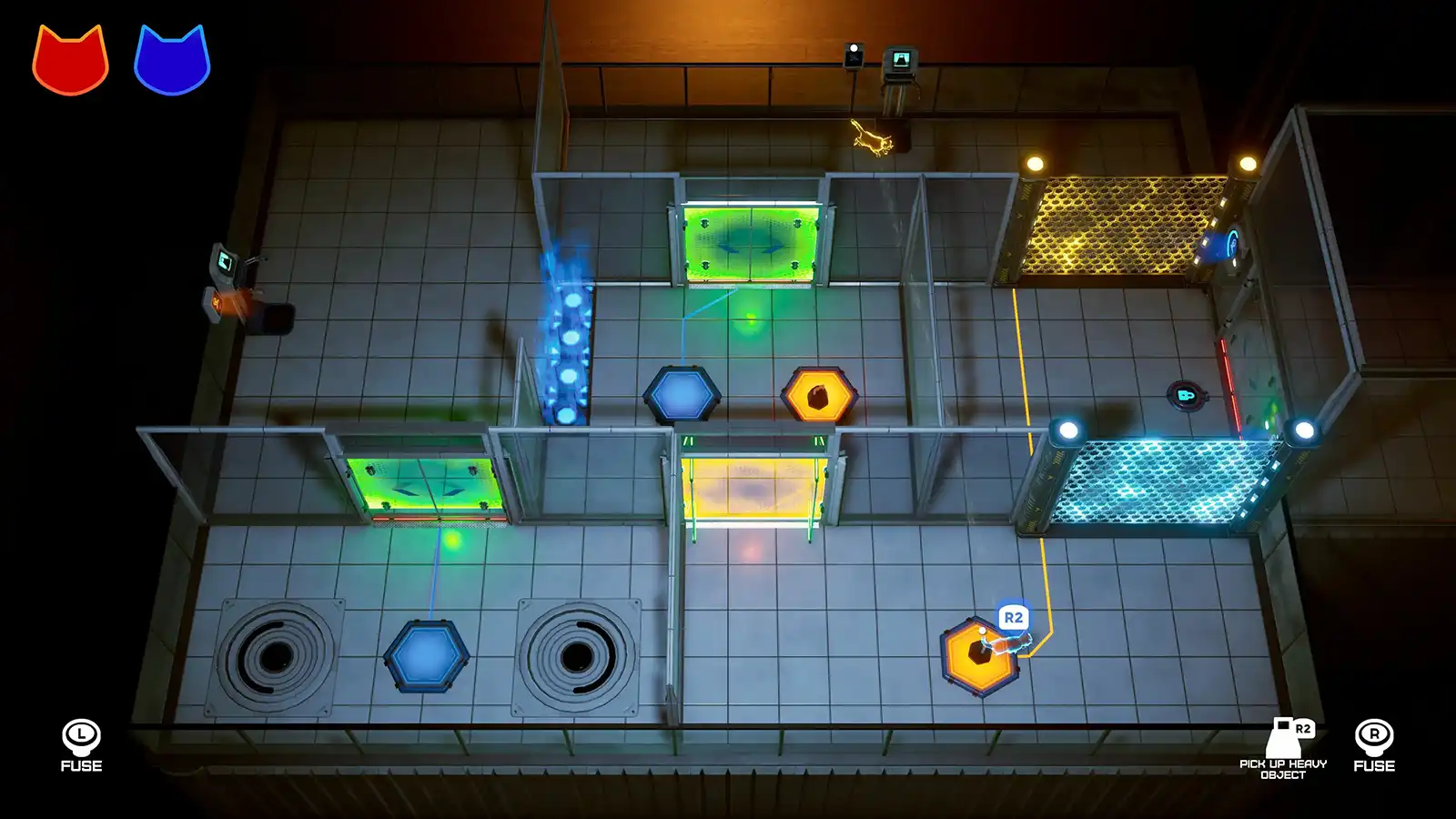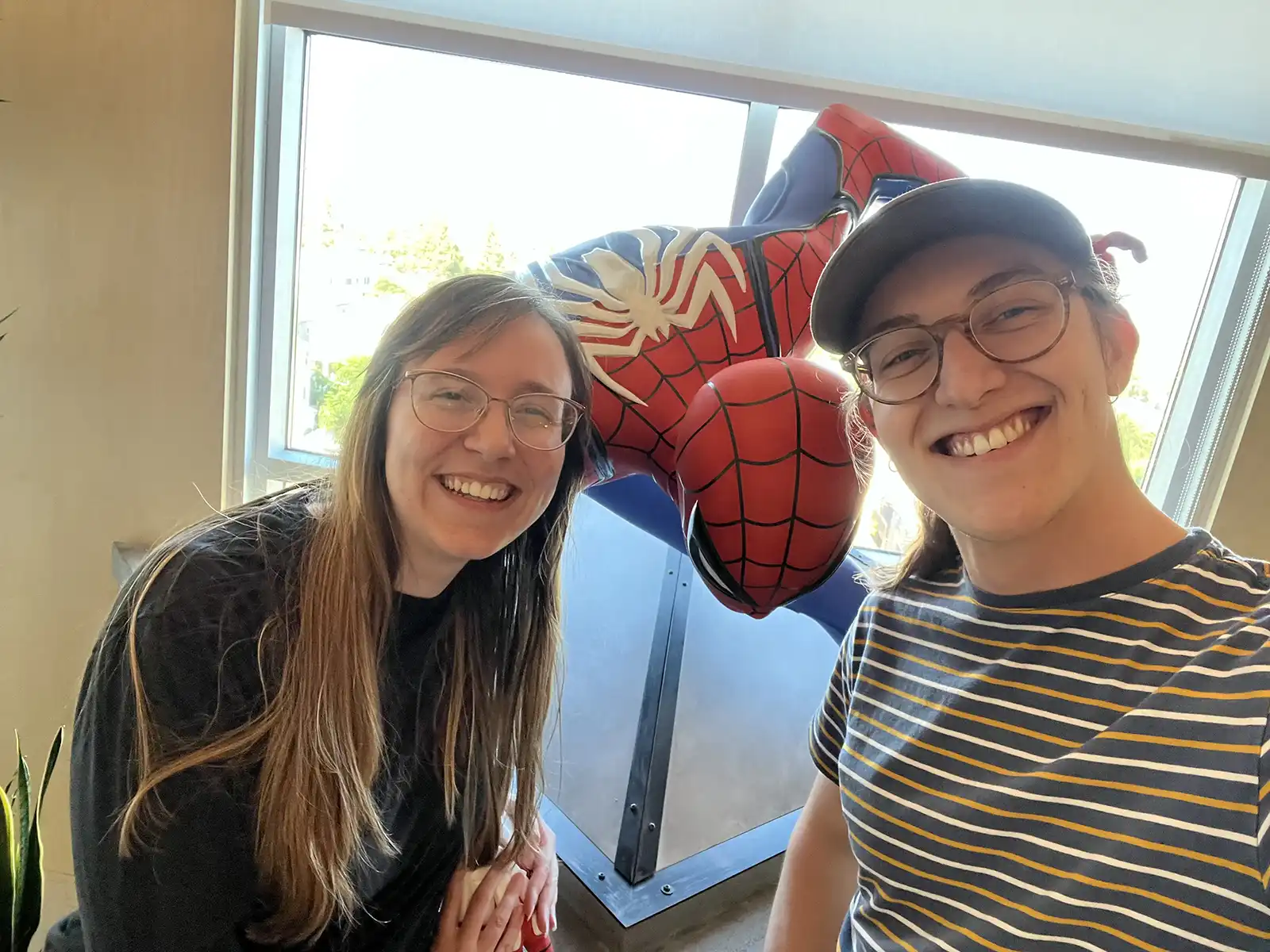In any deck-building game, as in life, winning or losing is not simply a matter of the quality of the cards in your hand — it’s about how you use them.
DigiPen graduate Jozie Crump understands this better than most. As a game designer at developer Second Dinner, she’s part of the talented team behind the award-winning Marvel Snap, a digital collectible card game that sees you going toe-to-toe with a series of online opponents using cards based on beloved heroes and villains from the sprawling Marvel Universe.
“It’s really delightful to see how different cards interact with each other. One of my favorite combos that an opponent used against me that I quickly added to my own deck was to play Arnim Zola on top of Knull, to double Knull’s power and get him at two locations,” Crump says.
For the uninitiated, a round of Marvel Snap goes something like this. Each player starts with a deck of 12 character cards, each with its own stats and special abilities that tie into the lore of the character. Across six (or occasionally seven) turns per game, players select the cards from their hand to place at any of three randomly selected Marvel-themed locations, with the goal of accumulating the most “power” points in at least two of the three locations by the end of play.
Do you open a duel by playing Squirrel Girl, a lesser-known one-time Avenger whose in-game ability to call in squirrel allies lets you add one power point to each separate location? Will you end by playing X-Men nemesis Magneto, whose ability to draw the opponent’s three- and four-cost cards to his location can disrupt the balance of power? With hundreds of digital cards already in circulation, the possibilities for unique interactions and powerful synergies are as infinite as the Multiverse itself.

“Hidden information in the game allows you to bluff and apply pressure to win in the end, and each turn questions the direction of you and your opponent’s moves,” Crump says. “I love how compact the strategy is, and it’s a blast to execute different combos in such a short amount of time.”
If there’s one strategy Crump has excelled at in her career thus far, it’s her ability to turn a challenging starting position into something advantageous. Looking back to her time in the BA in Game Design program, for instance, Crump had more to worry about than just homework and game projects.
“With my financial situation, I needed to work one way or another through the summers and during school, and it seemed like a huge plus if that work could be in the industry,” Crump says.
With the help of her growing network, Crump began building her professional resume early on, starting with a junior designer role at indie studio and development support outfit House of How during the summer after her sophomore year.
“One of my adjunct professors worked there and had encouraged me to apply,” Crump recalls.
After working there through the course of her junior year and following summer, Crump next decided to try out something a little different — teaching game design workshops for kids and teens as a mentor for Girls Make Games.
“I actually received a promotional ad for the job listing since I was on the mailing list for Global Game Jam, and it seemed like such a fun gig. As it turns out, it was!” she says.
By the middle of her senior year, Crump says she realized she’d been working roughly 20 hours per week throughout her time at DigiPen, mostly through on-campus jobs, such as serving as teacher’s assistant.
“It seemed like [there was] another opportunity for more professional experience, so I started applying to small indie roles, saying I could join immediately and work part-time while simultaneously applying to roles for that summer after graduation,” she says.

Once again, her planning paid off. After seeing an ad in the Seattle Indies meetup Discord, she secured a part-time role with indie dev team Abandoned Sheep, working as a puzzle designer on their forthcoming Schrodinger’s Cat Burglar — all while finishing her final semester at DigiPen.
“Working at Abandoned Sheep felt very similar to working on a small [DigiPen game] project,” Crump says. “When I applied, I submitted my puzzles from Professor [Bill] Morrison’s DES 340 class in lieu of a design test, and I used the same process I had learned and built those puzzles with in my everyday work for Abandoned Sheep.”
Amazingly, in spite of having to maintain a constant balance of work and school throughout her four years at DigiPen, she still managed to graduate in the spring of 2023 as the valedictorian of her program, having finished with a perfect 4.0 GPA. Wasting no time after that, Crump immediately swung into a design internship with Insomniac Games to work on a different Marvel smash hit — the open-world adventure Spider-Man 2.
My responsibilities include a lot of things we did at school — running playtests and compiling feedback, making changes based on player behavior, and designing and iterating systems.
That’s where she was working when she saw the posting for a full-time position at Second Dinner and decided to apply. As a recent grad with an impressive range of both indie and AAA experience under her belt already, it all helped secure her an interview and eventual job offer.
“Marvel Snap launched during my senior year of college, but at the time I was juggling a lot so I delayed downloading it myself. I ended up downloading it the summer after graduation when I was applying to Second Dinner,” Crump says. “The game is a blast and I play it for fun now. A lot of us who work on Marvel Snap play for fun, and we often share awesome splits or favorite decks from our personal accounts.”
Today, Crump continues to support the evolution of the live-service game as a feature designer, working with a multidisciplinary team to develop and implement new content and game modes.
“My responsibilities include a lot of things we did at school — running playtests and compiling feedback, making changes based on player behavior, and designing and iterating systems,” she says. “I work a lot with other designers during the early stages of content, but once a design is ready for more resources, there’s an immense amount of cross-team collaboration.”

Of course, developing a Marvel-licensed game also comes with plenty of opportunities to work with the deep lore of the franchise itself, and the Second Dinner team is always on the lookout for fun and clever ways to translate said lore into card-based game mechanics.
“The Marvel origins of what we’re designing is something that is always a part of the conversation,” Crump says. “Like Nick Fury being able to call powerful heroes into your hand, or the fact that Cap’s shield can’t be destroyed — one of design’s goals is to help the player feel like they are playing with the Marvel heroes they know and love.”
Looking back to where it all started, Crump says she first became interested in game design thanks to a high school psychology class that involved getting to explore research topics of her own choosing. That’s when she first gravitated toward the topic of games and player psychology.
My family lives thousands of miles apart in multiple directions, but they play Snap every day.
“Fifteen pages on the impact of video games on people’s psyche later and I was in love with the positive influence games could have on people’s lives,” she says. “I’ve always loved making gifts for people — cookies, hats, rugs, care packages, etc. And making games falls in that category for me.”
In that regard, Marvel Snap has very much become the gift that keeps on giving.
“From the beginning, I wanted to work on games that my friends and family play. My family lives thousands of miles apart in multiple directions, but they play Snap every day,” she says. “This lets me feel connected to them in a special way.”
Lastly, it’s worth mentioning that there’s one important family member who doesn’t live far away — that being her husband Joseph Crump, a fellow 2023 BA in Game Design graduate. The two designers met during their freshman year (Dragon friends of the couple may better recognize Jozie by her maiden name, Brajkovich) and officially tied the knot last November.
“We had almost identical schedules our very first semester by coincidence, and then not by coincidence the rest of our time at DigiPen,” she says. “I attribute a lot of my skill and growth as a designer to our constant discussions. We challenged each other to push further every step of the way.”
